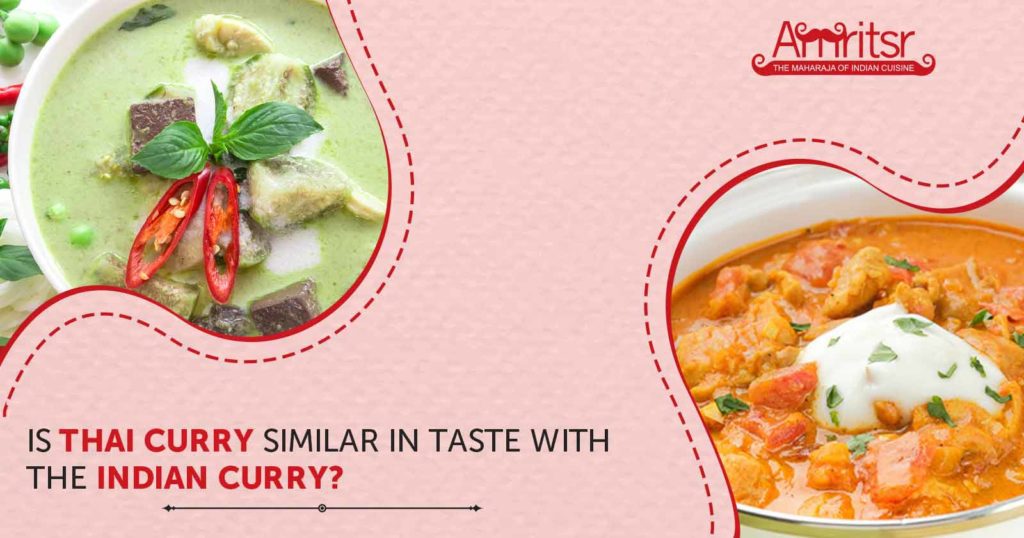Indian and Thai curries have different ingredients, preparation methods, appearance, heat levels, and serving styles. Indian curries contain a mixture of spices such as garam masala, cumin, coriander, turmeric, and garlic, while Thai curries have a mixture of herbs like lemongrass, galangal, coriander, and cumin. Indian curries usually contain tomatoes, onions, and chilies, while Thai curries often have Thai basil or cilantro, lime leaves, and colorful vegetables. Indian curries are spicier, thicker, and have a browner appearance due to the use of tomato paste, while Thai curries are creamier, lighter, and have a more subtle heat with a neon appearance from food coloring. Both curries are served with rice but can also be paired with other accompaniments.
Indian Curry vs. Thai Curry: Differences and Similarities
Curry is a popular dish loved by people all over the world. It originated in India and has been adopted by many countries with various adaptations to the curry’s ingredients and flavor. Some of the most popular types of curry are Indian and Thai. In this article, we will discuss the differences and similarities between Indian Curry and Thai Curry.
Ingredients
The ingredients used in Indian and Thai curries are different. Indian curry is made with a mixture of spices known as garam masala. Other ingredients include cumin, coriander, turmeric, ginger, and garlic. Indian curries also commonly contain tomatoes, onions, and chilies.
On the other hand, Thai curries are made with a mixture of herbs such as lemongrass or galangal, and spices like coriander and cumin. Thai curries also contain Thai basil or cilantro and lime leaves. Thai curries are generally more fragrant and sweeter than Indian curries, though they can also be spicy.
Preparation
The preparation of both Indian and Thai curries is also different. Indian curries usually start with frying the onion in oil before adding the spices, tomatoes or coconut milk. The mixture is then simmered, and the vegetables or meat are added to the sauce. The sauce is cooked until the vegetables are soft, and the flavors are well blended.
Thai curries start with pounding the herbs and spices in a mortar and pestle. The ingredients are then combined in a pan and simmered with coconut milk. Thai curries usually have a soupy consistency that is poured over cooked rice.
Color and Appearance
One of the most significant differences between Indian and Thai curries is their appearance. Indian curries are generally brown in color and have a thicker consistency due to the use of spices and tomato paste. In contrast, Thai curries are often brightly colored due to the addition of fresh herbs and colorful vegetables such as red peppers, carrots, and green beans alongside coconut milk. Some Thai curries also have a neon appearance due to the addition of food coloring.
Heat
Another significant difference between Indian and Thai curries is the heat. Generally, Indian curries are much spicier than Thai curries. This is because Indian curries use chili powder or fresh chilies, whereas Thai curries usually use milder green or red chili paste. Thai curries have a more subtle heat that balances out the dish’s sweetness and aroma.
Serving
Indian and Thai curries can be served with various sides and accompaniments. Indian curries are typically served with rice or flatbreads like Naan or Roti. Thai curries are also served with rice but are sometimes served with other side dishes like spring rolls or Pad Thai.
Conclusion
While Indian and Thai curries share common roots, their differences are significant. Indian curry is usually spicier, thicker, and more heavily spiced, while Thai curry is creamier, lighter, and has a milder flavor profile. Both Indian and Thai curry have a place in the culinary world and are loved by millions of people worldwide. Whether your preference is for spicy or mild flavors, you can always find a curry that suits your taste buds.
